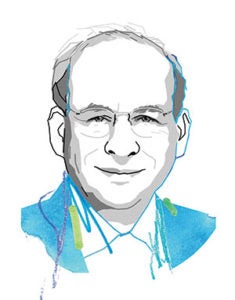
Of Capabilities and Possibilities
By David W. Leebron

While I write this at a difficult and dangerous time with 17 million diagnosed cases of COVID-19 in the United States and over 300,000 deaths, we are beginning to see some light at the end of the tunnel. A couple promising vaccines have been released, the first shipments have been made and doses administered. Sometime in the spring or early summer they should become generally available. There are obstacles, including the reluctance of many to take these vaccines, but it now seems likely that we will be able to be open for the next academic year in a more normal way.
For the last nine months, we have had to function in a completely different manner than we were accustomed to, and indeed largely dedicated to. In the spring, our instruction went completely online and we closed down or severely limited much of the activity on our campus, including many research labs. This fall, after taking substantial precautions — including ultimately administering around 80,000 COVID-19 tests — we were able to offer dual-delivery or hybrid instruction, reopen labs and otherwise carry on much of our mission, but in a limited way. We hope that won’t be necessary next fall.
We should not assume, however, that our university will not have changed. The result of the last nine months is that we have developed new capabilities on how to deliver education, create community and conduct research. We have learned more about what works and what doesn’t, what students need and what they sometimes don’t. Although levels of satisfaction with the teaching experience were relatively high, they weren’t equivalent to in-person classes. We have seen that our students very much want to be on our campus and want to be in classrooms with their teachers and fellow students.
The result of the last nine months is that we have developed new capabilities on how to deliver education, create community and conduct research. We have learned more about what works and what doesn’t, what students need and what they sometimes don’t.
And yet we also know that they appreciate the flexibility that multiple modes of delivery offer. We have made our education available to students around the world wherever they may be. We have increased the number of courses and degrees we offer remotely, and seen our summer enrollment burgeon as we moved online. We have allowed students to participate from afar even when a class is physically taking place on campus. We have created communities of students elsewhere by locating them together on a campus in China — at SUSTech in Shenzhen— or providing WeWork gathering spots for students somewhat more dispersed. That has led us to explore how we might use such facilities around the world either to offer educational programs locally, enable more effective remote participation or support study abroad programs.
The potential benefits of using remote technologies aren’t limited to the classroom. Last spring at a meeting with students, as we were discussing measures we might take to address various challenges, one of the students asked, “You aren’t going to take away our ability to get student services by Zoom after the pandemic, are you?” In that moment, I realized that in some respect at least, we would never go back. Our students would expect us to offer services and education in ways that best fit their needs.
Our alumni, while also missing their opportunities to come to campus, have in some ways participated more than ever. Programs we have offered, including a number sponsored by the Task Force on Slavery, Segregation and Racial Injustice, have reached a much wider audience by being offered online. Across the university, our schools have offered programs that have achieved high levels of engagement, and in the future, our alumni and others will no doubt expect such educational opportunities to be available to them.
The borders and limits that we are used to are receding as our choices in our educational programs are radically expanding.
One hundred and eight years ago, Rice began with a class of 59 students who gathered on our campus. Today, we have about 7,500 students enrolled, although many are now remote. But we also have over 100,000 new learners each month taking Rice courses online — some for credit, but most not. We are inviting some online participants who aren’t Rice students into our classrooms. We are offering not only new online degree programs, but also smaller “slices” of education that could become part of a master’s degree program. The borders and limits that we are used to are receding as our choices in our educational programs are radically expanding. Edgar Odell Lovett’s guiding phrase of “no upper limits” has potential new meanings for us, while we also must remain aware of how these developments could disrupt our traditional ways of carrying out our missions.
The last nine months have been very hard. We have all missed the intimacy of our campus community and what it contributes to education, well-being and personal growth. We will always make that a part of the Rice experience. But it is exciting to look ahead and contemplate how our new strengths will shape and influence our university as it continues to expand its horizons.
